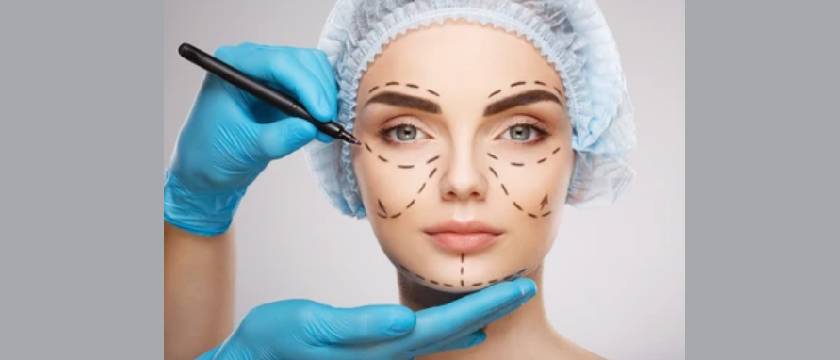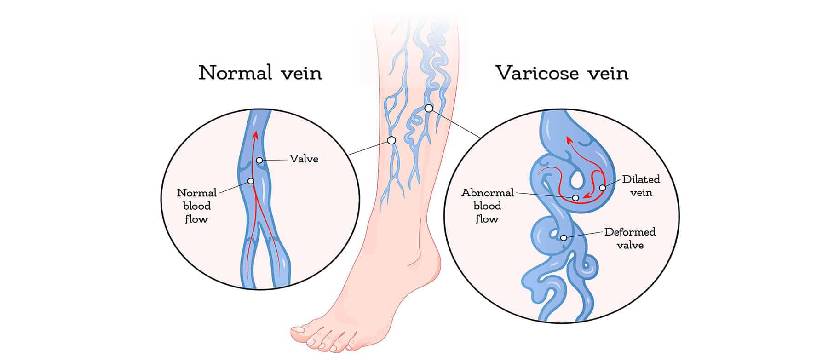A Comprehensive Guide to Hair Transplant for Men: Everything You Need to Know
Hair loss is a common problem that affects millions of men worldwide. While there are many different causes of hair loss, the most common is androgenetic alopecia, also known as male pattern baldness. It affects a large percentage of the male population, with studies suggesting that approximately 50% of men over the age of 50 experience some degree of hair loss. This condition is caused by a combination of genetic and hormonal factors, and it typically results in a gradual thinning of the hair on the top of the head.
Hair transplantation is often considered the most effective and permanent solution for restoring hair in men with advanced male pattern baldness. During a hair transplant procedure, hair follicles are harvested from donor areas, typically the back or sides of the scalp, and transplanted into balding or thinning areas. The transplanted hair continues to grow naturally, providing a permanent and natural-looking solution to hair loss.
Who is a good candidate for hair transplantation?
Hair transplantation is a good option for men who have:
* Male pattern baldness
* Hair loss due to injury or surgery
* Thinning hair that is not responding to other treatments
Causes of Hair Loss in Men
Several factors can contribute to hair loss in men, including:
-
Genetics
-
Hormonal Imbalances
-
Medical Conditions
-
Medications
-
Stress
-
Aging
-
Diet
Patterns of Hair Loss in Men
Male pattern baldness typically follows a specific pattern, starting with a receding hairline and thinning at the crown. The hair loss progresses over time, eventually leading to complete baldness in some cases.
Types of Hair Loss in Men
1. Androgenetic Alopecia: This is the most common type of hair loss in men, caused by a combination of genetics and hormones.
2. Alopecia Areata: This is an autoimmune disorder that causes patchy hair loss.
3. Telogen Effluvium: This is a temporary hair loss condition caused by stress, illness, or medication.
4. Traction Alopecia: This is a type of hair loss caused by excessive pulling or tension on the hair, often due to tight hairstyles.
How to Stop Hair Loss
There are several ways to slow down or stop hair loss, including:
1. Medications: Prescription medications, such as finasteride and minoxidil, can help slow down hair loss and promote hair regrowth.
2. Lifestyle Changes: Adopting a healthy lifestyle, including a balanced diet, regular exercise, and stress management, can help improve hair health.
3. Hair Care: Using gentle hair care products and avoiding harsh treatments, such as heat styling and chemical treatments, can help prevent hair damage and breakage.
4. Hair Transplant: For individuals experiencing significant hair loss, particularly male pattern baldness, hair transplant surgery offers a permanent solution.
Hair Transplant: The Best Option for Recovering Hair
For men experiencing hair loss, hair transplant can be an excellent option to regain a full head of hair. With proper care and precautions, the results can be long-lasting and natural-looking. Consult with a qualified hair restoration specialist to determine if hair transplant is the right choice for you.
What are the different types of hair transplantation?
There are two main types of hair transplantation:
Follicular unit transplantation (FUT): This technique involves removing a strip of skin from the donor area and then dissecting the hair follicles from the skin. The follicles are then transplanted into the recipient area.
Follicular unit extraction (FUE) : This technique involves extracting individual hair follicles from the donor area using a small punch tool. The follicles are then transplanted into the recipient area.
What is the procedure for hair transplantation?
The hair transplantation procedure typically takes 4–8 hours to complete. The procedure is performed under local anesthesia, so you will be awake during the procedure, but you will not feel any pain.
The first step in the procedure is to harvest the hair follicles from the donor area. The donor area is typically the back or sides of the scalp. The hair follicles are harvested using either the FUT or FUE technique.
Once the hair follicles have been harvested, they are transplanted into the recipient area. The recipient area is the area of the scalp that is experiencing hair loss. The hair follicles are transplanted using a small needle or blade.
After the hair follicles have been transplanted, you will be given a bandage to wear over the donor and recipient areas. The bandage will help to protect the transplanted hair follicles and keep them in place.
Pre-Therapy after Hair Transplant Procedure for Men by Doctor
After undergoing a hair transplant procedure, it's crucial to follow a proper post-operative care regimen to ensure optimal results. Pre-therapy, which typically begins a few weeks before the surgery, plays a vital role in preparing the scalp and maximizing hair growth. This regimen usually includes taking certain medications, not doing certain things, and following a specific hair care routine.
Medications
After the hair transplant procedure, your doctor will prescribe you a number of medications to help prevent infection and promote healing. These medications may include:
* Antibiotics
* Anti-inflammatories
* Pain relievers
* Anti-itch medication
It is important to take all of your medications as directed by your doctor. Do not stop taking your medications even if you start to feel better.
Activities to Avoid
After the hair transplant procedure, you will need to avoid certain activities that could damage the newly transplanted hair follicles. These activities include:
* Strenuous exercise
* Swimming
* Wearing a hat
* Combing or brushing your hair
* Using hair products
* Sun exposure
It is important to avoid these activities for at least two weeks after the hair transplant procedure.
Hair Care Routine
After the hair transplant procedure, you will need to follow a specific hair care routine to help promote healing and prevent infection. This routine typically includes:
* Washing your hair with a gentle shampoo and conditioner
* Applying a topical antibiotic ointment to the transplanted area
* Avoiding using hair products
* Combing or brushing your hair gently
* Wearing a loose hat when you are outside
It is important to follow this hair care routine for at least two weeks after the hair transplant procedure.
Benefits of Pre-Therapy:
* Optimizes scalp health for better hair growth
* Reduces the risk of complications
* Minimizes post-operative discomfort
* Enhances the overall success of the hair transplant procedure
What is the recovery process after hair transplantation?
The recovery process after hair transplantation is relatively short. You will be able to return to work and most of your normal activities within a few days. However, you will need to avoid strenuous activity for several weeks.
The transplanted hair follicles will begin to grow new hair within a few months. The new hair will continue to grow for several months until it reaches its full length.
Benefits of Hair Transplant for Men
Hair transplant offers several benefits for men experiencing hair loss, including:
1. Permanent Solution: Hair transplant provides a long-lasting solution to hair loss, as the transplanted hair is resistant to DHT.
2. Natural Results: Hair transplant uses the patient's own hair, ensuring a natural appearance.
3. Improved Confidence: Regaining a full head of hair can significantly improve a man's self-esteem and confidence.
4. Minimal Downtime: Hair transplant is an outpatient procedure with minimal downtime, allowing patients to return to their normal activities quickly.
What are the risks and side effects of hair transplantation?
Hair transplantation is a relatively safe procedure, but there are some risks and side effects associated with the procedure. These include:
-
Bleeding
-
Infection
-
Scarring
-
Numbness
-
Tingling
-
Itching
-
Swelling
-
Bruising
The risks and side effects of hair transplantation are typically minor and temporary. However, it is important to be aware of these risks before undergoing the procedure.
Safety Precautions After Hair Transplant
After a hair transplant, it's essential to follow specific safety precautions to ensure the best possible results:
1. Avoid touching the transplanted area for at least a week.
2. Sleep with your head elevated for the first few nights to minimize swelling.
3. Avoid strenuous activities and exercise for at least a week.
4. Avoid exposing the transplanted area to direct sunlight for at least a month.
5. Follow your doctor's instructions for post-operative care, including taking prescribed medications and attending follow-up appointments.
Results of Hair Transplant
The results of a hair transplant are not immediate. It takes time for the transplanted hair to grow and blend in with the existing hair. The initial growth can be seen within 3–4 months, with the full results becoming visible after 12–18 months.
The success rate of hair transplantation is high, with most patients experiencing a significant improvement in hair density and coverage. However, the final outcome depends on factors such as the patient's age, the extent of hair loss, and the skill of the surgeon.
Average Cost of Hair Transplantation
The cost of hair transplantation varies depending on several factors, including the technique used, the number of grafts required, the surgeon's experience, and the geographical location of the clinic.
On average, the cost of a hair transplant can range from $4,000 to $15,000. FUE is generally more expensive than FUT due to the advanced technology and increased precision involved in the procedure.
It is essential to remember that the cost of a hair transplant should not be the sole determining factor when choosing a clinic or surgeon. The quality of the procedure, the surgeon's experience, and the clinic's reputation should also be considered to ensure the best possible results.
Is hair transplantation permanent?
Hair transplantation is a permanent solution to hair loss. The transplanted hair follicles will continue to grow new hair for the rest of your life. However, it is important to note that hair transplantation will not prevent future hair loss. If you continue to experience hair loss, you may need to undergo additional hair transplantation procedures.
Conclusion
Hair transplantation is a safe and effective way to restore hair growth in areas that have been affected by hair loss. The procedure is relatively short, and the recovery process is quick. The results of hair transplantation are permanent, but it is important to note that the procedure will not prevent future hair loss.








